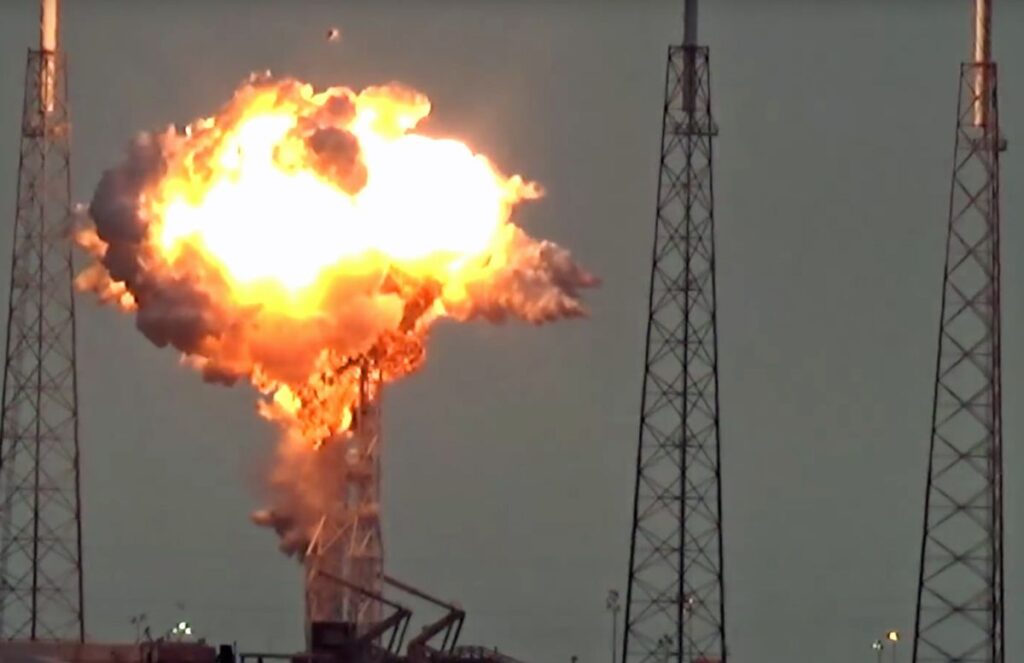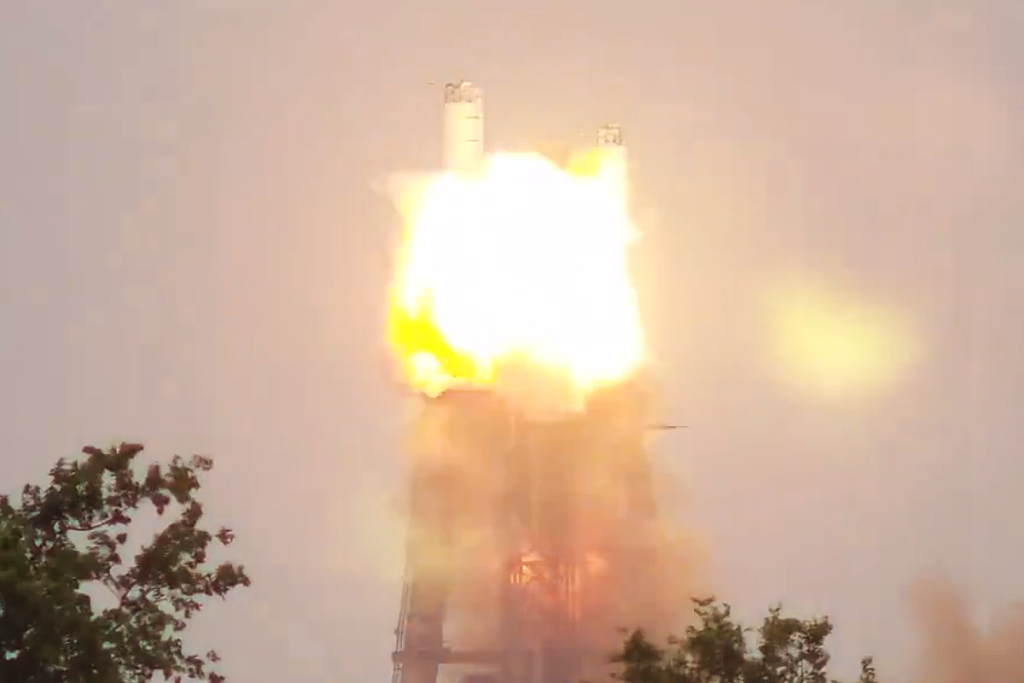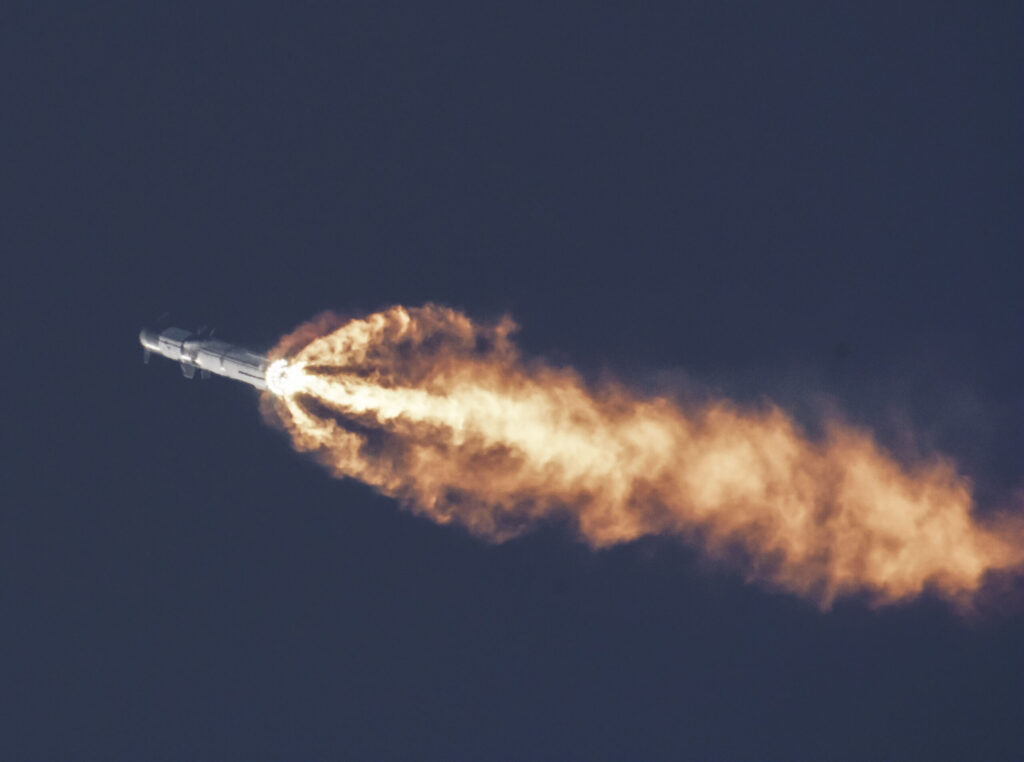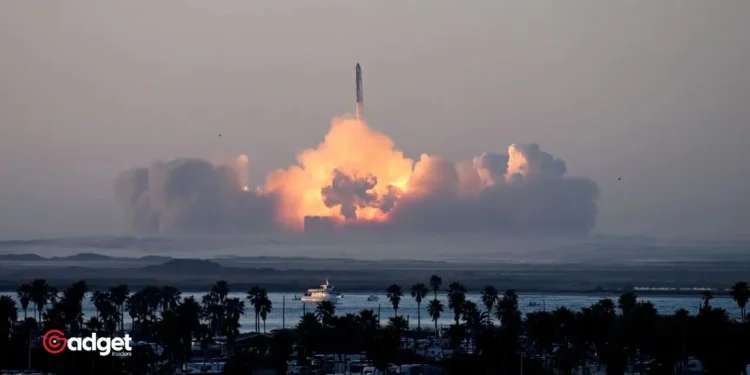A significant explosion has disrupted the operations at SpaceX’s Boca Chica, Texas facility, causing a setback in the much-anticipated fourth integrated flight test (IFT-4) of the Starship. According to footage captured by NASASpaceflight, the test of a Raptor engine ended in an explosive fireball, engulfing the test stand in flames mere seconds after ignition.

Immediate Implications for SpaceX’s IFT-4
The explosion occurred during a routine qualification test for one of SpaceX’s Raptor engines, crucial for the upcoming Starship flight. The footage, timestamped just after 4:12 pm local time, shows the engine shutting off abruptly 14 seconds post-ignition, followed by a rapid escalation into a fiery blast. “The raptor testing stand at McGregor experienced an anomaly a few moments ago. The vapors from the anomaly caused a secondary explosion on the test stand,” NASASpaceflight reported on their Twitter account.
Despite this incident, there has been no official statement from SpaceX regarding any delay in the Starship’s next test flight. Historically, the space company maintains a fleet of Raptor engines ready for integration, suggesting a potential buffer against such setbacks.
Testing the Limits: SpaceX’s Path Forward
SpaceX’s Starship, boasting 33 Raptor engines on its Super Heavy first stage, represents the pinnacle of rocket engineering, being the most powerful in the world. These Raptor 2 engines, currently under testing, are an upgraded version featuring enhanced thrust capabilities and design improvements over their predecessors.
Elon Musk, CEO of SpaceX, had previously highlighted the advances in the Raptor 2 engines in 2022, stating they offer about 230 tons of thrust and are cheaper and more reliable than the earlier versions. “Much more reliable and powerful,” Musk had remarked about the new engines, underscoring their importance in SpaceX’s ambitious aerospace endeavors.

Starship’s Journey and Future Endeavors
Starship’s previous flight, IFT-3, achieved orbital velocity, circling the Earth before making a splashdown in the Indian Ocean. The next flights aim to perfect the reentry and soft landing procedures, critical for future manned missions and SpaceX’s contractual obligations with NASA for lunar missions.
Moreover, SpaceX is planning an aggressive flight schedule for Starship, with aspirations of up to nine launches this year alone. These plans are contingent upon renegotiating terms with the Federal Aviation Authority (FAA) to accommodate the increased frequency of flights, essential for accelerating Starship’s development timeline.

Keeping Up with Aerospace Advances
Stay informed on the latest in engineering, technology, and space exploration with our daily newsletter, The Blueprint Daily. Sign up today to receive updates directly to your inbox and ensure you never miss out on the cutting edge of aerospace advancements.
https://x.com/mommaleo/status/1794108644893569527
About the Editor
Chris Young, an avid journalist and tech enthusiast, brings a wealth of experience from covering major technology and aerospace events. His extensive portfolio includes contributions to notable publications and platforms in the tech and aerospace industries.










